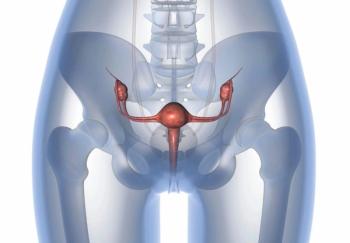
Positive Oncological Outcomes Found for Stage I NSCLC With Shorter Time to Surgery
Patients who had resection within 12 weeks of diagnosis of stage I NSCLC were found to have lower rates of recurrence.
A new study concerning patients treated in the Veterans Hospital Administration (VHA) system who were diagnosed with stage I non–small cell lung cancer (NSCLC) showed that those with longer wait times between cancer diagnosis and surgical treatment (TTS) were at a greater risk of disease recurrence and decreased survival times, according to data published in JAMA Network Open.1
Study investigators hypothesized that TTS would have negative disease outcomes, including pathologic upstaging and recurrence. TTS and was defined as time between radiological diagnosis and surgical treatment.
“While the patient demographics may not be uniformly comparable to the overall U.S. population, the general patterns of lung cancer care and health outcomes are similar between veterans and nonveterans. This means our findings are very likely to be relevant for the broad population of [patients with] early-stage lung cancer,” Brendan Heiden, MD, of the Washington University School of Medicine in St. Louis and author on the study, said in a press release.2
Investigators used the VHA to look at 9904 participants, of whom 96.3% were men. The mean age of the patients was 67.7 years. The study also noted that 26.6% of patients had a 0-day wait time between diagnosis and surgery. Patient characteristics such as age, sex, body mass index, income, comorbidities, and race were also collected.
This study looked at patients treated between October 2006 and September 2016 and focused on those who had been diagnosed with stage I NSCLC and were to undergo resection. Those who were not evaluated in the study included those with tumor sizes greater than T1-2; receipt of neoadjuvant chemotherapy; extremely delayed surgical treatment, defined as more than 6 months between diagnosis and surgical procedure; and receipt of an operation for recurrent disease.
Investigators assessed upstaging and positive margins using a multivariable logistic regression model. Most patients presented with adenocarcinomas (52.9%) with tumors greater than grade I. After 30 days, 2.1% of the patients had died, and 8.2% had been readmitted.
In 12.3% of patients, pathologic upstaging was found and positive margins were reported in 3.1% of patients. Those with higher odds of upstaging happened to be younger, with an odds ratio for every 1 year of age increase at 0.985 (95% CI, 0.975-0.996; P = .006).
Recurrence was detected in 42.0% of patients, with a median time to recurrence of 1.24 years. It was found that for each week of surgical delay beyond 12 weeks, recurrence increased by 0.4% (HR, 1.004; 95% CI, 1.001-1.006; P = .002).
This study did not find any relation between delayed surgery time and pathological upstaging or resection of positive margins. Investigators noted that veterans tend to wait longer for surgical treatment than the rest of the general population.
“Physicians and patients want to know more about the safety of delaying surgery. The risks have been poorly understood because previous studies have used imprecise definitions for the date of cancer diagnosis,” said Varun Puri, MD, MSCI, another author on the study.2 “The goal of our study was to provide more uniform data, which we did by tracking patients from most recent CT scan diagnosis to day of surgery,”
The strengths of this study show a cohort that all has access to universal health care through the VHA. The data were also accessible and allowed the investigators to view long-term oncologic outcomes.
Some limitations included the use of data-based CT imaging, which may be imperfect. Additionally, preoperative confirmation of pathological cases of NSCLC is typically not available.
The study authors concluded it’s imperative to schedule surgery within 12 weeks of diagnosis in order to minimize recurrence of cancer.
References
1. Heiden BT, Eaton DB, Engelhardt KE, et al. Analysis of delayed surgical treatment and oncologic outcomes in clinical stage I non–small cell lung cancer. JAMA Network Open. 2021;4(5):e2111613. doi:10.1001/jamanetworkopen.2021.11613
2. Delaying lung cancer surgery associated with higher risk of recurrence, death. News Release. Washington University in St. Louis. May 27, 2021. Accessed June 15, 2021. https://medicine.wustl.edu/news/delaying-lung-cancer-surgery-associated-with-higher-risk-of-recurrence-death/
Newsletter
Stay up to date on recent advances in the multidisciplinary approach to cancer.



















































































